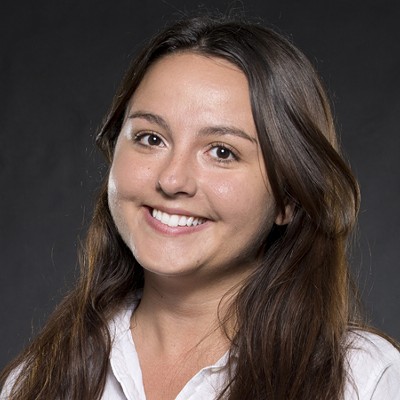Riverland Road is known for its quiet streets and veil of tree canopy. When one owner wanted to dissect his 5.19-acre property into 13 parcels of land to make way for a new road, a new sidewalk, and 13 new homes, the residents of Riverland worried about the fate of more than 400 trees planted there — a collection of ancient oak trees, sabal palms, laurel oaks, native wild orchids, slash pine trees, shrubs, and native vegetation.
"This plan will destroy what we're looking at today," says Jeremy Chancey, a Riverland resident and certified arborist for more than 26 years. "You're going to pinch massive trees into small quarters, and ultimately those trees will be removed or die a slow death. It's a terrible thing to watch."
The residents' fight came to a head at last night's Planning and Zoning meeting, when officials voted on Robert Black's request to divide the property located at 2681 Riverland Rd. Black had hired urban planners who argued that splitting up the property into 13 parcels didn't violate any of the city's planning and zoning codes. More than 70 residents, who attended in a sea of matching red T-shirts, disagreed. They insisted that the trees are intricately linked to the "character of the neighborhood," a clause in the language of the resolution cementing the incorporation by the City of Fort Lauderdale.
After a four-hour-long meeting and heartfelt pleas from residents, board members voted 3-3. Though technically a tie, the request will move to city commissioners as a recommendation to deny. Residents considered it a victory for the trees.
"You have to respect the passion of that neighborhood," says Steven Glassman, Planning and Zoning Board member, after last night's meeting. "They came together as one unit. It was incredible to watch."
In May 2015, Black proposed splitting the property into 14 lots. The average lot size in the new development would be 11,278 square feet. In contrast, the neighboring lots average 39,130 square feet. When the request went before the Planning and Zoning Board, officials voted 4-4. Black withdrew his application before the plan could be heard before the city commission.
Residents have been fighting Black's requests for the past year. They created an online petition with more than 1,579 signatures. Sixty-five emails in opposition to the request were also sent to board members.
Certified arborist Jeremy Chancey wrote to board members: "We desire development that will preserve the beauty of this area that your children, grandchildren and mine will enjoy and appreciate the efforts that we took to protect it. This is the Muir Woods of Fort Lauderdale. It is our responsibility to protect it."
A Riverland resident and sustainability academic named Isabel Rimanoczy explained to board members that the region is an ecosystem for many animals: "Home to a privileged ecosystem, this area hosts a variety of endangered species in the immediate vicinity including gopher tortoises, burrowing owls, barred owls, yellow-crowned night herons, hawks, red cockade and pleated woodpeckers, osprey, butterflies, bees, amphibians, salamanders, mole skunks, and more. In my own backyard, I have counted 62 different species."
At last night's Planning and Zoning meeting, Black submitted a new request. This time, the property would be split into 13 homes. He hired traffic, water, and sewage experts whose reports attested that the new lots would not affect the neighborhood. The request also stated that the property wasn't considered an environmentally sensitive land or a site of archaeological or historical importance.
At the meeting, board member Steven Glassman challenged Black's request. He said since the house that sits on the property was built before 1952, it could have merits for historic preservation. Glassman also noted that the land sits at the fork of the New River and that there are areas beside it that the county noted do have archaeological significance. "Since we don't have a city archaeologist, maybe there isn't any designation because no one bothered to check," Glassman said at the meeting.
There were at least 30 speakers at last night's meeting. They stressed the importance of the trees on that property. One board member even called them "the elephant in the room." Residents also pointed out that the small lot sizes aren't compatible with their neighborhood. They had concerns with flooding and drainage. They also fear the congestion of 12 more families in the neighborhood and the traffic and pedestrian safety with more cars on the road. Only Black spoke in support of his request.
It was enough to convince three board members to vote against it, which resulted in a tie. For now, the trees have won.
[
{
"name": "GPT - Billboard - Slot Inline - Content - Labeled - No Desktop",
"component": "16971022",
"insertPoint": "2",
"requiredCountToDisplay": "2"
},{
"name": "Editor Picks",
"component": "15769925",
"insertPoint": "4",
"requiredCountToDisplay": "1"
},{
"name": "Inline Links",
"component": "16575154",
"insertPoint": "8th",
"startingPoint": 8,
"requiredCountToDisplay": "7",
"maxInsertions": 25
},{
"name": "GPT - Rectangle 2x - Slot Auto-select - Labeled",
"component": "15782206",
"insertPoint": "8th",
"startingPoint": 8,
"requiredCountToDisplay": "7",
"maxInsertions": 25
},{
"name": "Inline Links",
"component": "16575154",
"insertPoint": "8th",
"startingPoint": 12,
"requiredCountToDisplay": "11",
"maxInsertions": 25
},{
"name": "GPT - Leaderboard to Tower - Slot Auto-select - Labeled",
"component": "15782207",
"insertPoint": "8th",
"startingPoint": 12,
"requiredCountToDisplay": "11",
"maxInsertions": 25
}
]











